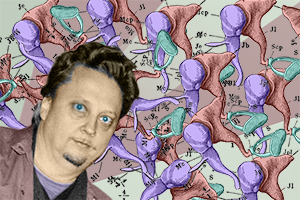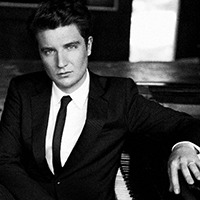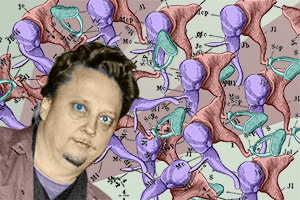
It’s not often that music is an anatomy lesson. The ossicles are the three tiny bones of the middle ear, the hammer (malleus), anvil (incus), and stirrup (stapes). Each titles a movement of U.C. Berkeley music professor Edmund Campion’s new work for the Berkeley Symphony, Ossicles (Tiny Bones). In it, the composer tries to celebrate the concept that all that gets these bones to moving is fair game. As Campion puts it:
My piece is focused on the physical aspect of sound, both cooked and raw, noisy and clarified. There are always narrative references, maybe the sound of trains passing through the concert hall, but only as a reminder of the wonder of sound and the miracle of cognition. In Ossicles, you might recognize allusion to past music traditions. This is not quoting nor homage, just occurrences of unlikely musical apparitions that emerge from an explored set of materials that have lost a need for boundaries.
It’s news to me that materials have needs of any sort. It’s composers who have needs for boundaries, and Campion is no exception. He chose to put a potpourri of self-notated sounds into three labeled boxes, bounding each phrase with acts of will — beginnings, endings, and progressions. Here’s a sampling from my notes of his three-part parade:
Single violin => stereo sliding phrase => wave-ish => horn noise => buzzing => rattling => thuds => motoric => blurry => more motoric => glissandos => busy-ness => bump => throbby => tire-iron bangs => waltz => motoric => ascending tremolos => short meaningless episodes => ascension with gongs => bongos => 4 brass blasts => squeaky/spooky ascensions.
Elusive Allusions
Other than the snippet of waltz, I recognized no allusions to “past music traditions.” Perhaps music students can comb the score for them, not the general audience. What came across most strongly, contrary to Campion’s disavowal (“… the subject is music, not theater”) was the physicality of the ear. In one manifestation of the analogy, two players held up timpani heads on either side of the stage. These could not help but strike many as the ear’s tympanic membranes. At one point, pairs of each encased marbles that were rolled around. At another point, single heads, loosened, were rattled like jibing sails. In another manifestation, the numerous thuds in the first two movements could not help but get one thinking about the striking of the malleus on the incus.

All in all, the result was an aimless, inoffensive set of sounds, almost all of which I’ve heard before. The work received mild applause and two curtain calls, but I couldn’t help thinking of the best way to address the “wonder of sound” and “miracle of cognition” — "Listening" to John Cage’s 4:33.
Defying the claim of “Defiantly Original 13/14 Season” on the program booklet, the concert concluded the first half with a routine rendition of Wagner’s Siegfried Idyll, and devoted the entire second half to Rachmaninov’s Piano Concerto No. 2 in C Minor. Gerard Schwarz filled in as guest conductor because Music Director Joana Carneiro suffered from “medical conditions that prevent air travel” from her home in Portugal. Schwarz’ considerable experience assured a competent result, especially in Campion’s new work. But he offered no interpretive revelations.
Impressive Technique … But
Alessio Bax was the pianist. The Italian-born American resident possesses a formidable technique, best displayed in the opening to the concerto with its resonant low notes, and in the frisky passages in the finale. There is no question that it wowed the audience. In my view, however, he may place too much emphasis on technical skills, and not enough on the poetry of performance. This was exemplified in his choice of encore, Georges Cziffra’s arrangement of Brahms’ Hungarian Dance No. 5, a supremely flashy extravaganza that, with astonishing but silly virtuoso antics, does violence to Brahms’ melodic intent.
I’ve been promising myself to quit harping on the acoustics of Zellerbach Auditorium — what can be done? Some reflective panels were present, and actually helped somewhat. An unpleasant surprise, however, occurred in the finale of the Rachmaninov, when the lightest taps of cymbals shot out like crashes. Was this effect checked out during rehearsal?
Make no bones about it, it was not one of the most memorable evenings among the many I’ve enjoyed here.

